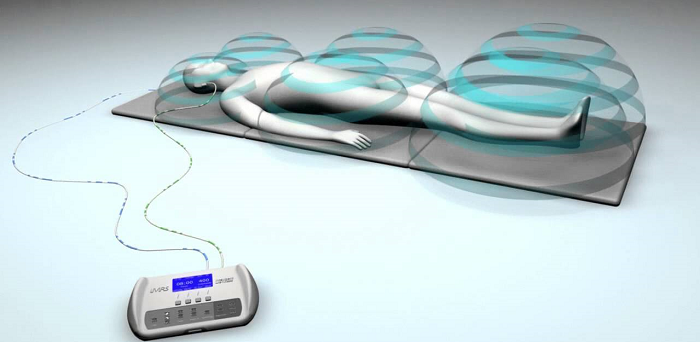We’re not just trying to grab your attention with a sensational headline. Although, if you own a business – any type of business that creates products or services – your attention needs to be grabbed. Your organization can have the best reputation, great products or services, and tons of customers. But one mistake can end all of that.
This is exactly what happened to Baylor St. Luke’s Medical Center last week. You may have heard about it on the news. A 75-year-old woman was admitted to St. Luke’s ER with a brain hemorrhage, and the hospital (once renowned for their cardiac care) made a fatal mistake. They gave her A+ plasma when her blood type was B+.
That day, medical staff had drawn blood from a different ER patient but did not get rid of the sample after the patient was discharged. Mistake #1. How could that happen? When the 75-year-old woman was rushed into the same room as the prior patient, you can guess what happened… The vial of blood was still sitting in there.
After the woman was examined and her doctor ordered a blood transfusion, hospital staff put a new label over the old label on the previous patient’s vial of blood. Mistake #2. Why would staff put a new label over an old one? And why wouldn’t they check to ensure that the blood was drawn from the patient who was actually in the room?
After adding the new label, staff sent the vial of blood out to the lab. A lab, by the way, that was understaffed (according to a government investigation that was later released). Mistake #3. Why was the lab understaffed and why is understaffing a concern?
Ultimately, this entire chain of mistakes caused the 75-year-old woman to suffer through four cardiac arrests in three hours. Within 24 hours, she was dead.
This is what happens when humans are the last link in the system to fail.
While it may seem natural to point fingers and place blame, we’re here to tell you that it isn’t entirely the staff’s fault that the woman died. Many errors occurred prior to humans making these mistakes. Human factors experts were most likely not part of the hospital’s care team. They should have been.
Human factors experts can be an enormous help to hospitals.
Human factors experts can provide the big picture point of view of how all the moving parts intersect in this complicated system. They can pinpoint where human errors are likely to occur. More importantly, they can help create designs, processes and procedures that optimize what people do well and mitigate what they don’t – including the design of the work environment and how it supports the safe delivery of care.
In the case of this woman’s death, the system, the work environment, the processes and the procedures didn’t fully support the human execution (or were non-existent). This invited deviation and error. Unfortunately, we don’t immediately associate human factors experts as part of the safety team. We typically think of quality or system safety engineers. In reality, human factors is the only human safety discipline. Human factors experts work to prevent injury and error in everything that we do – whether it be the design of environments, products, services or tasks. Our mission is to protect the human first by mitigating as much risk as is possible and reasonable through design and safeguards. Human error is never a cause or a reason – but a symptom – that there is a failure in the system that drives unsafe situations and errors.
Of course, it didn’t take long for news channels across the globe to pick up the story. People were horrified that this was even possible. “These are really basic errors that I didn’t really think happened that often anymore,” said Dr. Ashish Jha, an expert in hospital quality who directs Harvard University’s Global Health Institute.
But guess what? They do happen, and they happen at many hospitals and companies in every industry for that matter. Most of the time it’s a situation of mistaken perception. People assume that because it hasn’t happened, it can’t or won’t happen. When it does, it’s catastrophic and perplexing for everyone involved. Granted, these errors don’t always cause deaths, so we don’t always hear about them in the headlines. But they often cause injuries, distress and mistrust.
“It is our responsibility to learn from these mistakes, and we take this responsibility very seriously,” St. Luke’s CEO Doug Lawson wrote on the hospital’s website after the woman’s death. “An incident like this should never happen.”
Unfortunately, this woman’s death is not the only negative incident that’s occurred at this hospital recently. Medicare stopped funding heart transplants at St. Luke’s after an investigation by the Houston Chronicle and ProPublica. Their findings uncovered a high number of patient deaths in addition to uncommon complications following heart transplants at the hospital over the past several years. Their report also touched on poor outcomes after heart bypass surgeries, an increasing number of deaths after lung and liver transplants, complaints about poor nursing care, and even a lawsuit by one of their own physicians who alleged that he was retaliated against after voicing concerns about patients receiving unnecessary ICU treatments.
This is a pretty large list of serious problems. It should be a red flag that there’s something much greater going on that needs to be addressed.
Soon after this news of the blood transfusion-related death went viral, a scathing report about the hospital by the Centers for Medicare and Medicaid was also made public. In it, an incredible 122 blood labeling mistakes were documented to have occurred over just four months. One of these happened just four days before the 75-year-old woman sought treatment. In this other instance, a 73-year-old woman noticed that she was retaining too much fluid after having dialysis. When staff made the request for her to have a blood transfusion, the order was meant for a patient with a different type of blood. Luckily, the hospital’s lab noticed the error before it was too late for the patient.
Thank goodness.
Unfortunately, though, it’s too late for the current state of St. Luke’s reputation.
It’s clear to us that St. Luke’s – and any other hospital or company that faces similar issues – could use our help. As a fellow Houston-based company, we want St. Luke’s to thrive again. We do not want to see this hospital fail our community. We want patients to hear the words “St. Luke’s” and feel total confidence that they’re going to get the best care with minimal risk. We know it won’t happen overnight. There’s a great deal of damage to repair. But when patient safety and care are put first… when a human factors team is in place and working to align the goals of every department in the hospital… it will happen. Let’s bring back the St. Luke’s that was once world-renowned.






